|
|
|

|
|||||

|
|

Health insurance company Cigna (NYSE:CI) announced better-than-expected revenue in Q3 CY2025, with sales up 9.5% year on year to $69.75 billion. Its non-GAAP profit of $7.83 per share was 2.5% above analysts’ consensus estimates.
Is now the time to buy Cigna? Find out by accessing our full research report, it’s free for active Edge members.
"Our strong quarterly results reflect the breadth of our businesses and focused execution on our growth strategy, even in a dynamic environment," said David M. Cordani, chairman and CEO of The Cigna Group.
With roots dating back to 1792 and serving millions of customers across the globe, The Cigna Group (NYSE:CI) provides healthcare services through its Evernorth Health Services and Cigna Healthcare segments, offering pharmacy benefits, specialty care, and medical plans.
A company’s long-term sales performance can indicate its overall quality. Any business can put up a good quarter or two, but the best consistently grow over the long haul. Luckily, Cigna’s sales grew at a decent 11.6% compounded annual growth rate over the last five years. Its growth was slightly above the average healthcare company and shows its offerings resonate with customers.
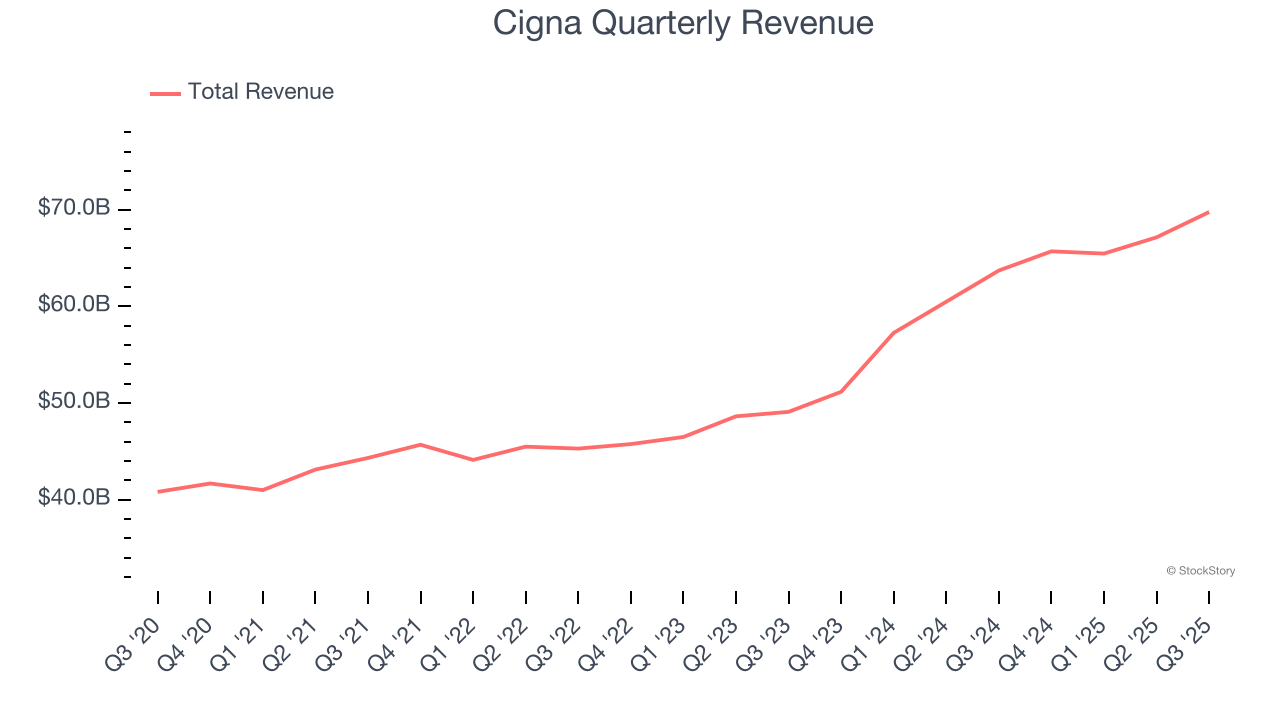
Long-term growth is the most important, but within healthcare, a half-decade historical view may miss new innovations or demand cycles. Cigna’s annualized revenue growth of 18.8% over the last two years is above its five-year trend, suggesting its demand recently accelerated.
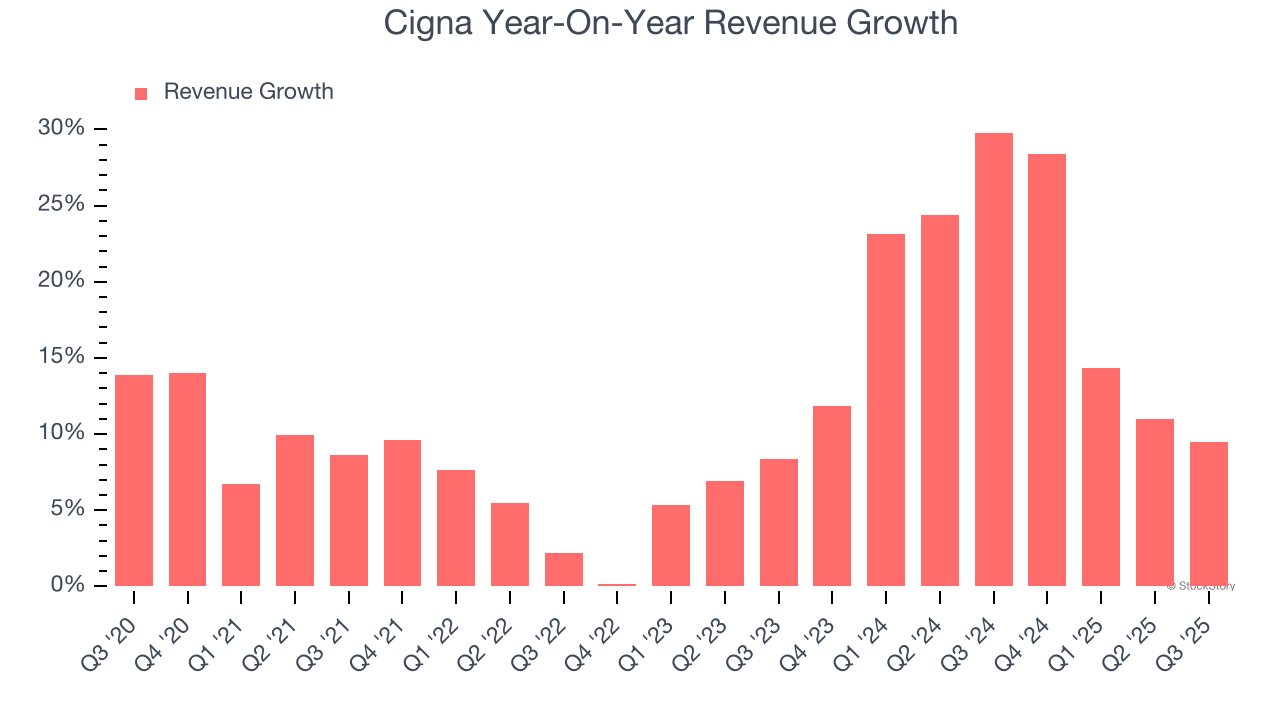
Cigna also reports its number of customers, which reached 16.35 million in the latest quarter. Over the last two years, Cigna’s customer base averaged 2.3% year-on-year declines. Because this number is lower than its revenue growth, we can see the average customer spent more money each year on the company’s products and services.
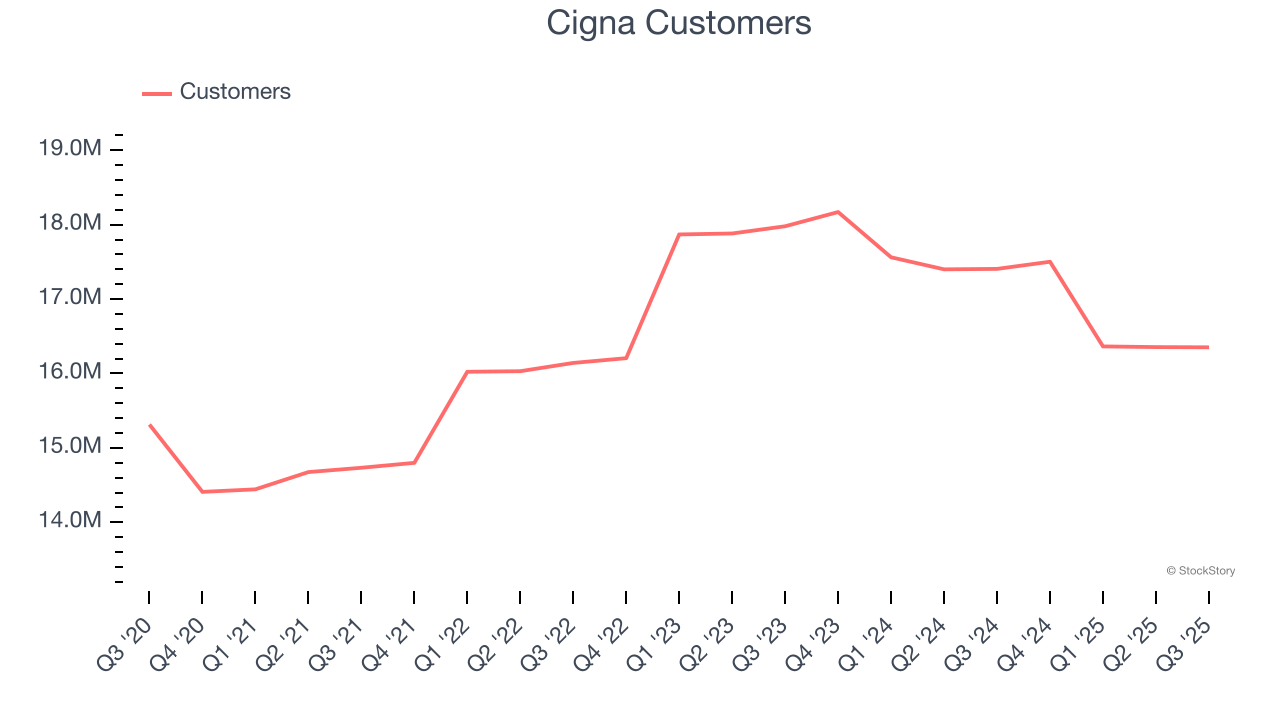
This quarter, Cigna reported year-on-year revenue growth of 9.5%, and its $69.75 billion of revenue exceeded Wall Street’s estimates by 3.6%.
Looking ahead, sell-side analysts expect revenue to grow 3.2% over the next 12 months, a deceleration versus the last two years. This projection doesn't excite us and suggests its products and services will face some demand challenges. At least the company is tracking well in other measures of financial health.
Today’s young investors won’t have read the timeless lessons in Gorilla Game: Picking Winners In High Technology because it was written more than 20 years ago when Microsoft and Apple were first establishing their supremacy. But if we apply the same principles, then enterprise software stocks leveraging their own generative AI capabilities may well be the Gorillas of the future. So, in that spirit, we are excited to present our Special Free Report on a profitable, fast-growing enterprise software stock that is already riding the automation wave and looking to catch the generative AI next.
Operating margin is an important measure of profitability as it shows the portion of revenue left after accounting for all core expenses – everything from the cost of goods sold to advertising and wages. It’s also useful for comparing profitability across companies with different levels of debt and tax rates because it excludes interest and taxes.
Cigna was profitable over the last five years but held back by its large cost base. Its average operating margin of 4% was weak for a healthcare business.
Analyzing the trend in its profitability, Cigna’s operating margin decreased by 1.4 percentage points over the last five years. The company’s two-year trajectory also shows it failed to get its profitability back to the peak as its margin fell by 1.1 percentage points. We still like Cigna but would like to see some improvement in the future.
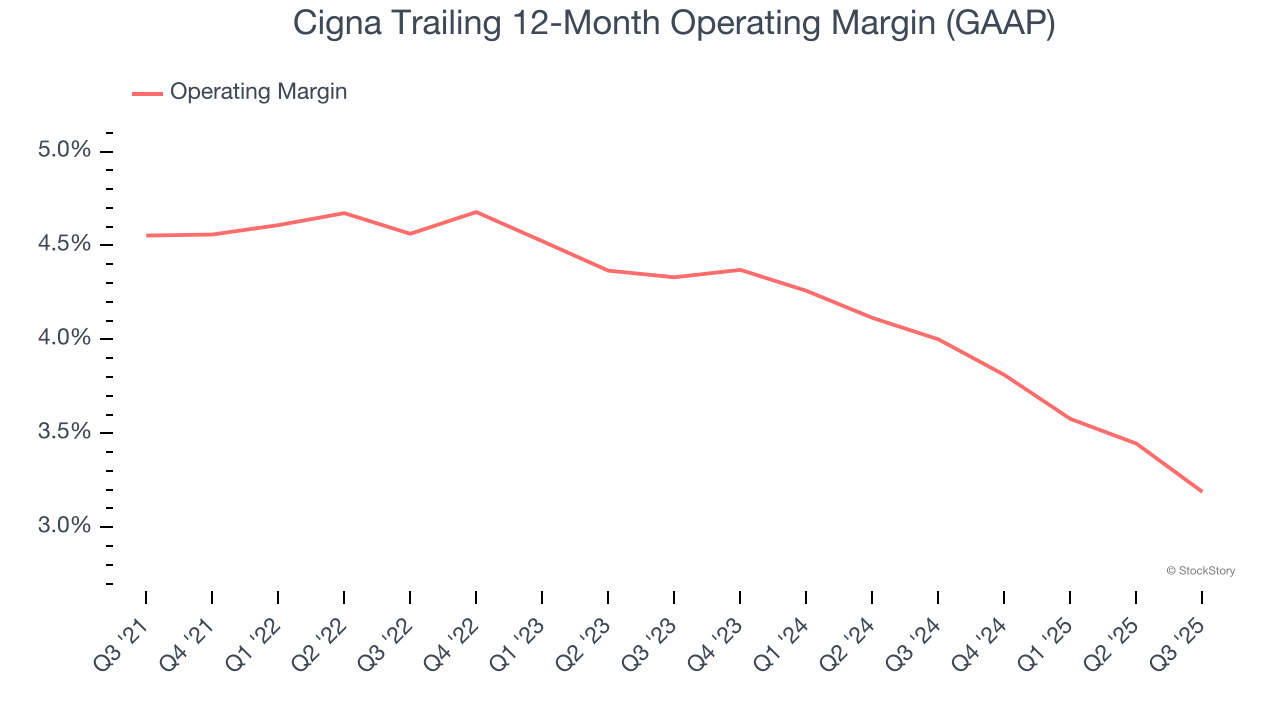
In Q3, Cigna generated an operating margin profit margin of 3%, down 1 percentage points year on year. This reduction is quite minuscule and indicates the company’s overall cost structure has been relatively stable.
We track the long-term change in earnings per share (EPS) for the same reason as long-term revenue growth. Compared to revenue, however, EPS highlights whether a company’s growth is profitable.
Cigna’s EPS grew at a solid 8.1% compounded annual growth rate over the last five years. However, this performance was lower than its 11.6% annualized revenue growth, telling us the company became less profitable on a per-share basis as it expanded due to non-fundamental factors such as interest expenses and taxes.
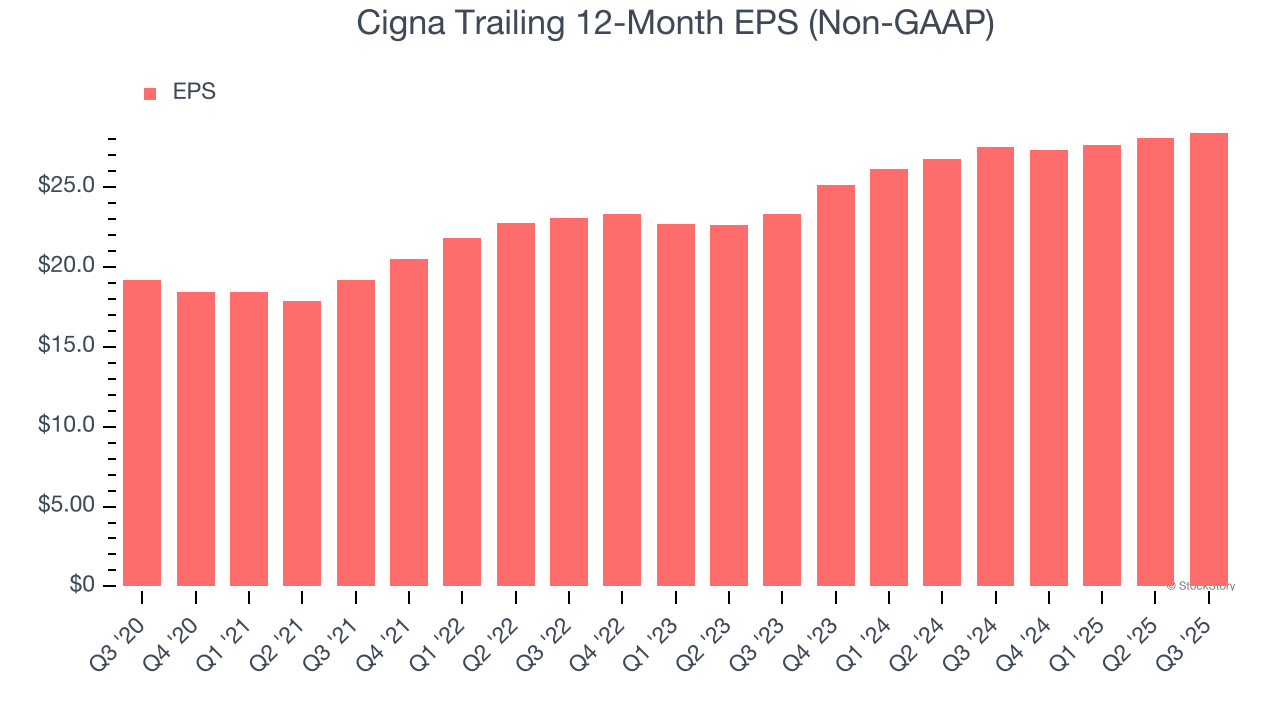
We can take a deeper look into Cigna’s earnings quality to better understand the drivers of its performance. As we mentioned earlier, Cigna’s operating margin declined by 1.4 percentage points over the last five years. This was the most relevant factor (aside from the revenue impact) behind its lower earnings; interest expenses and taxes can also affect EPS but don’t tell us as much about a company’s fundamentals.
In Q3, Cigna reported adjusted EPS of $7.83, up from $7.51 in the same quarter last year. This print beat analysts’ estimates by 2.5%. Over the next 12 months, Wall Street expects Cigna’s full-year EPS of $28.41 to grow 14.5%.
We enjoyed seeing Cigna beat analysts’ revenue and EPS expectations this quarter. Overall, this print had some key positives. The stock remained flat at $301.10 immediately after reporting.
Sure, Cigna had a solid quarter, but if we look at the bigger picture, is this stock a buy? What happened in the latest quarter matters, but not as much as longer-term business quality and valuation, when deciding whether to invest in this stock. We cover that in our actionable full research report which you can read here, it’s free for active Edge members.
| 10 hours | |
| 12 hours | |
| Dec-09 | |
| Dec-08 | |
| Dec-04 | |
| Dec-03 | |
| Nov-28 | |
| Nov-28 | |
| Nov-28 | |
| Nov-23 | |
| Nov-21 | |
| Nov-20 | |
| Nov-16 | |
| Nov-12 | |
| Nov-12 |
Join thousands of traders who make more informed decisions with our premium features. Real-time quotes, advanced visualizations, backtesting, and much more.
Learn more about FINVIZ*Elite